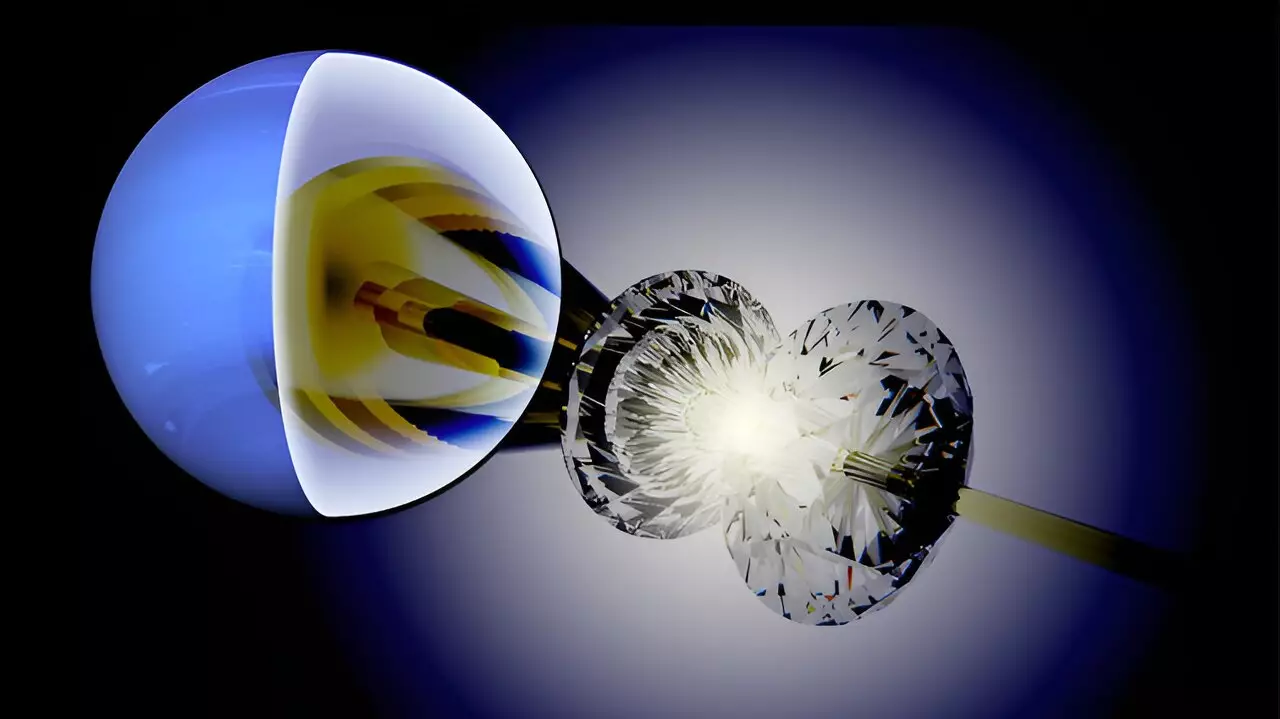Equation of state measurements in high-pressure environments have always presented challenges to scientists in the field of condensed-matter sciences. Recently, a breakthrough paper published in the Journal of Applied Physics by an international team of researchers from Lawrence Livermore National Laboratory (LLNL), Argonne National Laboratory, and Deutsches Elektronen-Synchrotron introduces a new sample configuration that pushes the boundaries of what was previously achievable in the diamond anvil cell. This new sample package aims to improve the reliability of equation of state measurements in pressure regimes exceeding 5 million atmospheres, reaching conditions similar to Neptune’s interior.
The team at LLNL has been at the forefront of developing the toroidal diamond anvil cell, a revolutionary tool that has allowed scientists to reach static pressure limits in condensed-matter sciences. However, the next hurdle to overcome was enhancing the sample fabrication process for conducting more complex experiments at higher pressures. Static compression experiments beyond 300 GPa pose significant challenges, with the compression environment often being less than ideal. The innovative sample package developed by the team addresses these challenges by providing an improved compression environment, thereby enhancing the quality of equation of state data obtained.
In order to achieve accurate equation of state measurements at extreme pressures, the stress applied to the sample material must be distributed uniformly. The researchers accomplished this by microfabricating a sample package using a 10-step process within a tiny 6 µm diameter chamber, approximately 20 times smaller than the width of a human hair. The sample package consists of the target material embedded in a soft metal capsule, which acts as a pressure-transmitting medium. This innovative approach ensures that the stress is evenly distributed around the sample material, enabling reliable equation-of-state measurements even at micron scales.
The experiments conducted at Argonne National Laboratory and Deutsches Elektronen-Synchrotron validate the effectiveness of this new sample configuration. While the team initially tested the methodology on molybdenum with a copper pressure-transmitting medium, the versatility of this sample package means that it can be applied to a wide range of materials. Lead author Claire Zurkowski emphasizes that this work is just the beginning of sample-package microfabrication in the toroidal diamond anvil cell. The team anticipates that this innovative sample-encapsulation method will open doors for static equation of state calibrations in various fields of science, including physics, chemistry, and planetary science, pushing the boundaries of static compression data into the multi-megabar range.
The development of this new sample configuration represents a significant milestone in the field of high-pressure equation of state measurements. By addressing the challenges of conducting reliable experiments at extreme pressures, the research team has paved the way for more accurate and comprehensive data collection in the future. The potential applications of this innovative sample package are vast, offering new opportunities for exploration and discovery in the realm of high-pressure science.


Leave a Reply